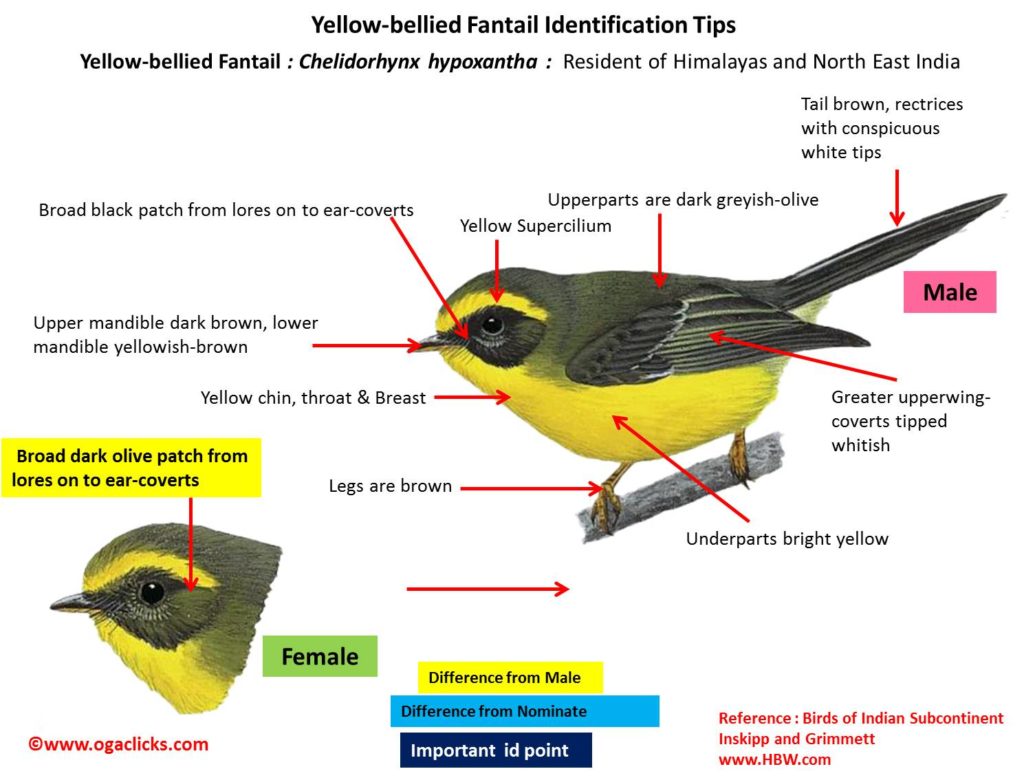Yellow-bellied-fantail

Yellow-bellied Fantail Chelidorhynx hypoxantha
Etymology :
- Chelidorhynx : Greek word khelidon – swallow ; rhunkhos- bill. { Swallow like bill}
- Hypoxantha : Greek Word hupo – beneath; xanthos –yellow
Vernacular Names : Lepcha: Sitte kloom, Naga: Pongking-lo, Bang-ho-go
Distribution in India: Resident of Himalayas and North East India.
Description: Size of 12-13 cm. The male has upperparts dark greyish-olive, forehead and supercilium yellow, broad black patch from lores on to ear-coverts; upperwing greyish-olive, greater upperwing-coverts tipped whitish; underparts bright yellow; tail brown, rectrices with conspicuous white tips and shafts; iris dark brown; upper mandible dark brown, lower mandible yellowish-brown; legs brown. Female is like the male, except that patch from lores through ear-coverts is dark olive. Found in forest and secondary jungle, but prefers moist evergreen broadleaf forest; in breeding season, mostly mixed coniferous and birch or rhododendron forests. Found in Plains and foothills from 1000 m – 3600m.
Food Habits: It eats small insects. The prey is flushed by fluttering among foliage, and captured in aerobatic sallies; also hover-gleans. It forages mainly in outer foliage of low bushes to canopy of tall trees, occasionally coming to ground. Joins mixed parties of small insectivorous birds, particularly in non-breeding season.
Breeding Habits: They breed in Feb- Sept in India. The nest is a small deep cup made of compacted moss, bound externally with spider web and lichen, lined with moss, hair or feathers, placed above ground on horizontal branch. They lay a clutch of 3 eggs. The incubation is done by both sexes for 14–15 days. The chicks fed by both parents. The fledging period is 10 to 16 days. The young fed in vicinity of nest for at least 14 days after fledging.